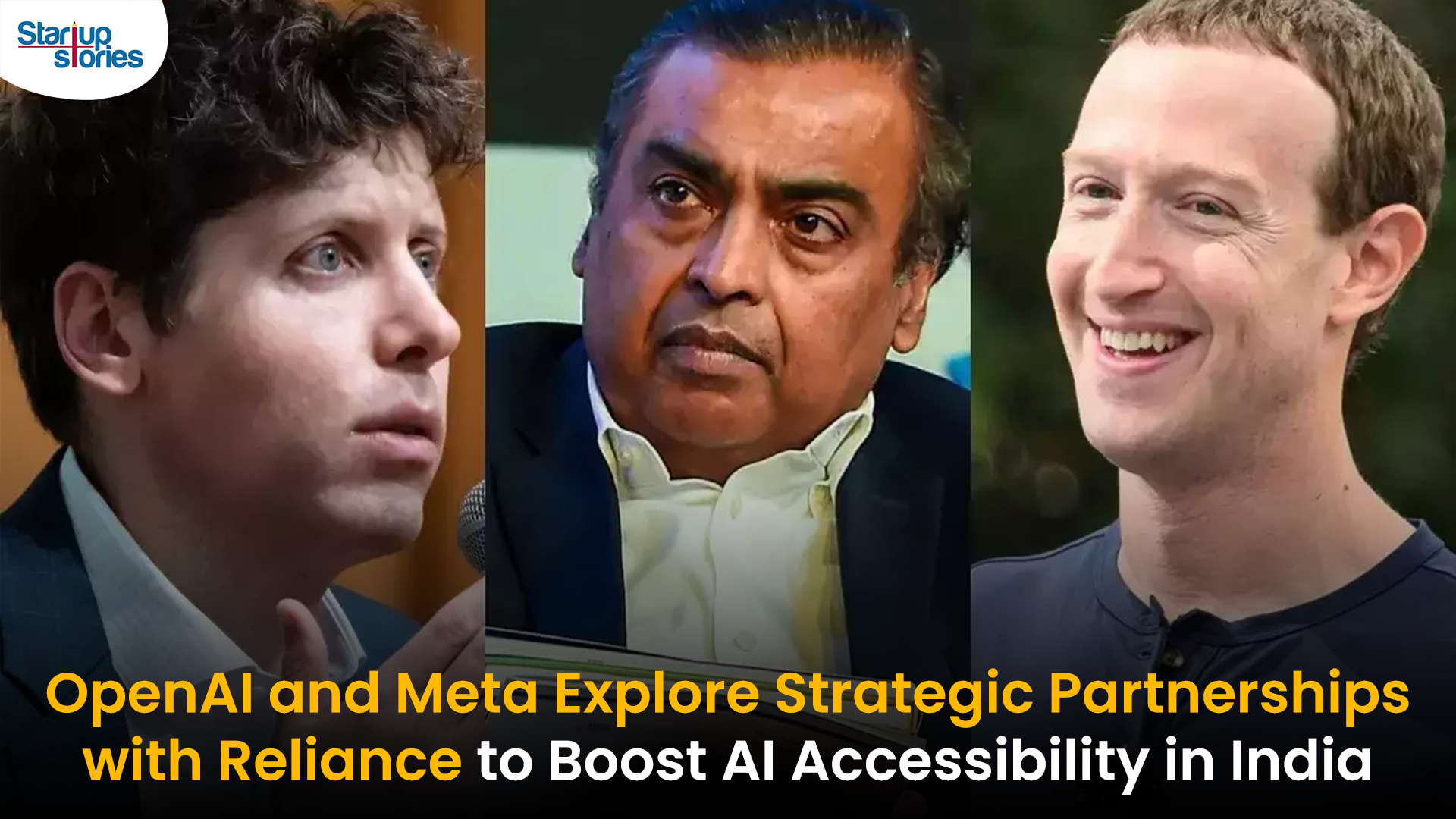Artificial Intelligence
Google Introduces ‘Learn About’—An AI-Powered Learning Companion for Educational Research!

Google has launched an innovative experimental AI learning tool named “Learn About,” designed to serve as an adaptive educational companion for users seeking to enhance their knowledge and research capabilities. Powered by Google’s advanced LearnLM AI model, this new feature aims to provide a personalized and engaging experience tailored to individual learning objectives.
Features of Learn About
Unlike traditional AI chatbots such as ChatGPT or Google’s Gemini, Learn About presents information in a visually dynamic format. Key features include:
- Interactive Formats: The tool incorporates interactive lists, quizzes, and contextual information boxes that define key terms, allowing users to engage with content more actively.
- Comprehensive Resources: To deepen understanding, Learn About suggests related articles and videos, making it a robust resource for in-depth educational research.
- Credible Sourcing: The tool sources information from reputable academic platforms. For instance, while general queries on Gemini may reference Wikipedia, Learn About has been noted to pull from specialized sites like Physics Forums, providing reliable answers to complex questions.
How Learn About Works
Users can access Learn About by signing in with their Google account and entering topics of interest into the search box. The AI is designed to adapt its responses based on the user’s level of knowledge, offering tailored explanations even for one-word queries. For example, when asked about specific academic concepts, Learn About not only provides definitions but also elaborates on related factors through interactive lists and examples.
Availability and Future Plans
Currently available on the web as an experimental feature, Learn About is limited to select regions during its testing phase, with plans for broader availability following initial trials. While it is not yet accessible in India, Google aims to expand access once the testing phase concludes.
Related Developments: Gemini Live Enhancements
In addition to Learn About, Google is advancing its Gemini Live platform by exploring document understanding capabilities. The latest beta version of the Google app includes code that hints at future support for file uploads. This functionality will allow users to upload documents and interact with them conversationally through Gemini Live, further enhancing AI-powered educational assistance.
Implications for Education
The introduction of Learn About reflects Google’s commitment to leveraging AI technology in education. By providing a tool that enhances learning experiences through interactivity and credible sourcing, Google aims to support students, educators, and lifelong learners in navigating complex subjects more effectively.
Conclusion
With the launch of Learn About, Google is positioning itself as a leader in the integration of AI into educational tools. This innovative platform not only enriches the learning experience but also empowers users with the resources needed for effective research. As the tool undergoes testing and expands its reach, it has the potential to significantly impact how individuals engage with educational content in an increasingly digital world.
Artificial Intelligence
Adopt AI Secures $6 Million to Power No-Code AI Agents for Business Automation

Adopt AI, a San Jose and Bengaluru-based agentic AI startup, has raised $6 million in seed funding led by Elevation Capital, with participation from Foster Ventures, Powerhouse Ventures, Darkmode Ventures, and angel investors. The funding will be used to expand the company’s engineering and product teams and to scale enterprise deployments of its automation platform.
Founded by Deepak Anchala, Rahul Bhattacharya, and Anirudh Badam, Adopt AI offers a platform that lets businesses automate workflows and execute complex actions using natural language commands, without needing to rebuild existing systems. Its core products include a no-code Agent Builder, which allows companies to quickly create and deploy AI-driven conversational interfaces, and Agentic Experience, which replaces traditional user interfaces with text-based commands.
The startup’s technology is aimed at SaaS and B2C companies in sectors like banking and healthcare, helping them rapidly integrate intelligent agent capabilities into their applications. Adopt AI’s team includes engineers from Microsoft and Google, with Chief AI Officer Anirudh Badam bringing over a decade of AI experience from Microsoft.
The company has also launched an Early Access Program to let businesses pilot its automation solution and collaborate on new use cases.
Artificial Intelligence
Social Media Platforms Push for AI Labeling to Counter Deepfake Risks

Social media platforms are intensifying efforts to combat the misuse of deepfake technology by advocating for mandatory AI labeling and clearer definitions of synthetic content. Deepfakes, created using advanced artificial intelligence, pose significant threats by enabling the spread of misinformation, particularly in areas like elections, politics, and personal privacy.
Meta’s New Approach
Meta has announced expanded policies to label AI-generated content across Facebook and Instagram. Starting May 2025, “Made with AI” labels will be applied to synthetic media, with additional warnings for high-risk content that could deceive the public. Meta also requires political advertisers to disclose the use of AI in ads related to elections or social issues, aiming to address concerns ahead of key elections in India, the U.S., and Europe.
Industry-Wide Efforts
Other platforms like TikTok and Google have introduced similar rules, requiring deepfake content to be labeled clearly. TikTok has banned deepfakes involving private figures and minors, while the EU has urged platforms to label AI-generated media under its Digital Services Act guidelines.
Challenges Ahead
Despite these measures, detecting all AI-generated content remains difficult due to technological limitations. Experts warn that labeling alone may not fully prevent misinformation campaigns, especially as generative AI tools become more accessible.
Election Implications
With major elections scheduled in 2025, experts fear deepfakes could exacerbate misinformation campaigns, influencing voter perceptions. Social media platforms are under pressure to refine their policies and technologies to ensure transparency while safeguarding free speech.
Artificial Intelligence
Transforming India’s AI Landscape: OpenAI and Meta’s Collaborative Talks with Reliance Industries

OpenAI and Meta Platforms are reportedly in discussions with India’s Reliance Industries to explore potential partnerships aimed at enhancing their artificial intelligence (AI) offerings in the country. This development underscores India’s growing significance in the global AI landscape.
Key Aspects of the Discussions
- Partnership with Reliance Jio: One of the main focuses is a potential collaboration between Reliance Jio and OpenAI to facilitate the distribution of ChatGPT in India. This could enable wider access to advanced AI tools for businesses and consumers, leveraging Reliance’s extensive telecommunications network.
- Subscription Price Reduction: OpenAI is considering reducing the subscription cost for ChatGPT from $20 to a more affordable price, potentially just a few dollars. While it is unclear if this has been discussed with Reliance, such a move could significantly broaden access to AI services for various user demographics, including enterprises and students.
- Infrastructure Development: Reliance has expressed interest in hosting OpenAI’s models locally, ensuring that customer data remains within India. This aligns with data sovereignty regulations and addresses growing concerns about data privacy. A planned three-gigawatt data center in Jamnagar, Gujarat, is expected to serve as a major hub for these AI operations.
Market Implications
These potential partnerships reflect a broader trend among international tech firms aiming to democratize access to AI technologies in India. If successful, they could reshape India’s AI ecosystem and accelerate adoption across various sectors. As negotiations continue, stakeholders are closely monitoring how these alliances may impact India’s technological landscape and its position as a leader in AI innovation.












Abhguszd
May 26, 2025 at 7:50 am
Explore the ranked best online casinos of 2025. Compare bonuses, game selections, and trustworthiness of top platforms for secure and rewarding gameplaycasino bonus.
92ui1
June 5, 2025 at 7:14 pm
clomiphene uses can you get generic clomiphene pills get cheap clomid without rx where buy cheap clomid price clomid chance of twins how to get clomiphene no prescription where to get generic clomid no prescription
J88
November 6, 2025 at 2:46 am
Đến với J88, bạn sẽ được trải nghiệm dịch vụ cá cược chuyên nghiệp cùng hàng ngàn sự kiện khuyến mãi độc quyền.
谷歌站群
November 7, 2025 at 9:03 pm
专业构建与管理谷歌站群网络,助力品牌实现全域流量的强势增长。谷歌站群
Kuwin
November 8, 2025 at 4:21 am
kuwin sở hữu kho game đa dạng từ slot đến trò chơi bài đổi thưởng, mang đến cho bạn những giây phút giải trí tuyệt vời.
ios超级签
November 8, 2025 at 10:39 pm
苹果签名,苹果超级签平台,ios超级签平台ios超级签苹果企业签,苹果超级签,稳定超级签名
站群程序
November 13, 2025 at 3:20 am
采用高效谷歌站群策略,快速提升网站在搜索引擎中的可见性与权重。谷歌站群
GO88
November 14, 2025 at 9:17 pm
Tham gia cộng đồng game thủ tại Go88 để trải nghiệm các trò chơi bài, poker phổ biến nhất hiện nay.
MM88
November 22, 2025 at 12:07 pm
Khám phá thế giới giải trí trực tuyến đỉnh cao tại MM88, nơi mang đến những trải nghiệm cá cược thể thao và casino sống động.
MM88
November 22, 2025 at 1:43 pm
Với giao diện mượt mà và ưu đãi hấp dẫn, MM88 là lựa chọn lý tưởng cho các tín đồ giải trí trực tuyến.
iwin
November 29, 2025 at 10:57 pm
iwin – nền tảng game bài đổi thưởng uy tín, nơi bạn có thể thử vận may và tận hưởng nhiều tựa game hấp
DOWNLOAD WINDOWS 11 CRACKED
December 1, 2025 at 12:36 am
Контент для взрослых можно транслировать на надежных платформах для обеспечения конфиденциальности.
Откройте для себя надежные хабы для взрослых для качественного просмотра.
My page: DOWNLOAD WINDOWS 11 CRACKED
Leon Casino Testbericht
December 20, 2025 at 8:36 pm
Welche das sind und wie deren Willkommensbonus aussieht, können Sie der folgenden Liste entnehmen. Die dritte Einzahlung belohnt TrueFlip zusätzlich mit 75
Freispielen. Außerdem bietet Twin ein Treueprogramm für bereits
angemeldete Spieler. Im Twin winken nicht nur neuen Spielern klasse Angebote,
diese digitale Spielhalle hat auch ein hervorragendes Treuprogramm für
die eigenen Stammspieler im Repertoire. Bei Emojino haben Neukunden Grund zum Jubeln,
den neben einer Riesenauswahl an tollen Spielen winkt ein saftiger
Willkommensbonus von bis zu 750 Euro plus 75
Freispiele.
Die Karten sind im Wert von 10, 25, 50 oder 100 Euro erhältlich und können an verschiedenen Verkaufsstellen einfach erworben werden. Mit dieser App können Kunden von Paysafecard ihre Einkäufe ganz einfach und
unglaublich schnell machen – dafür braucht man nur
die QR-Codes zu scannen. Die App von Paysafecard bietet
verschiedene Funktionen, mit denen Kunden noch mehr Spaß haben können, wenn sie Online sind, als wenn sie draußen gehen. Sie werden jedoch sicher die Tatsache mögen, dass diese Zahlungsmethode auch für den mobilen Einsatz angepasst ist.
Sie können den ganzen Tag Roulette, Spielautomaten oder Blackjack von Ihrem Computer aus Ihrem Haus spielen. Er teilt Karten aus,
nimmt ein Buy-in entgegen, platziert Chips und führt andere Aktionen bei Tischspielen durch.
References:
https://online-spielhallen.de/admiral-casino-aktionscode-ihr-schlussel-zu-exklusiven-vorteilen/
deuces wild video poker
December 27, 2025 at 2:24 am
These bonuses effectively double your playing funds, allowing for extended gameplay and increased chances of winning.
These promotions can boost bankrolls, allow players to try new games risk-free, and reward loyalty.
Understanding RTP helps players make informed choices about which games to play,
potentially maximising their chances of winning or
minimising losses over time.
The online gambling experience is notably boosted by a deep selection of
payment methods that are known and trusted by the players.
💸 In creating our comprehensive rankings, we analyze top
platforms based on their welcome bonuses, reload offers, and
cashback promotions, and tournament opportunities for AU-players.
Some Australian online casinos are legit and
hold a valid operating license, while others
are not. With over 2,600 gaming machines and countless table games,
it’s the largest casino in the Southern Hemisphere. I
love that beyond the gaming, the venue offers luxury hotel rooms, fine
dining, and even a theatre, so it’s not just about gambling
but a full entertainment experience. In Australia, these
land-based casinos are fully legal and licensed by state authorities,
so you can trust that the games are fair and the venues
follow responsible gambling rules.
References:
https://blackcoin.co/free-100-pokies-no-deposit-sign-up-bonus/
Best social casino slots
December 27, 2025 at 9:00 pm
It features a six-star hotel – Crown Towers – offering 349 ultra-luxury rooms,
world-class dining, an exclusive casino, designer boutiques, and an award-winning spa.
From direct access to Michelin-starred restaurants and private spa suites to curated in-room dining and luxury transfers, Crown ensures your stay is effortless, indulgent, and memorable.
Unlock exclusive experiences and earn rewards across gaming, dining,
hotels, and entertainment — all under one world-class loyalty program.
Discover premium entertainment at Crown Casino — Australia’s leading destination for world-class gaming, luxury hotels, fine dining, and unforgettable experiences.
Enjoy priority access to Crown’s gaming salons, exclusive restaurants,
luxury shopping, and 24/7 concierge service.
Built in 2015,Rydges Australia Square offers stylish accommodation in the heart of Sydney CBD (Central Business District).
Tucked behind a storied sandstone facade—once home to Sydney’s Fairfax newspaper empire and the venerable Bank of New South
Wales—Paradox Sydney pens a fresh chapter on a timeless page.
Located in Sydney CBD (Central Business District), next to bustling
Martin Place, The Fullerton Hotel Sydney features an à
la carte restaurant, a bar and access to a fitness centre.
Just a 1-minute walk from the Queen Victoria Building (QVB), Megaboom City Hotel is located in the heart of
Sydney CBD. Located in the heart of Sydney CBD (Central Business District), Castlereagh Boutique Hotel, an Ascend Collection Hotel offers a restored,
heritage-listed property near Sydney’s most cherished…
Situated in the heart of Sydney, Swissôtel Sydney—recently
awarded Metropolitan Superior Hotel of the Year at the 2025 AA NSW Awards for Excellence—is
ideally located for shopping, sightseeing, and…
Situated in Sydney and with Central Station Sydney reachable within 800 metres, Paramount House Hotel features
concierge services, non-smoking rooms, a restaurant, free WiFi throughout
the property… Overlooking Sydney Harbour, Four Seasons Hotel Sydney offers
complimentary Premium WiFi, a bar, restaurant, fitness centre and swimming pool.
Located 50 metres from Wynyard Train Station providing links throughout Sydney and 1 km from the Barangaroo Reserve, Little
National Hotel Sydney in Sydney offers a fitness centre and a
rooftop bar.
References:
https://blackcoin.co/free-18-unlock-your-bonus-today/
http://customer-callcenter74.pe.kr/press/495642
December 29, 2025 at 9:25 am
online casino with paypal
References:
http://customer-callcenter74.pe.kr/press/495642
https://jobsspecialists.com/companies/2025s-best-paypal-casinos-expert-verified-sites
December 29, 2025 at 9:36 am
online real casino paypal
References:
https://jobsspecialists.com/companies/2025s-best-paypal-casinos-expert-verified-sites
https://somalibidders.com/employer/top-10-online-casinos-in-australia-2025
December 30, 2025 at 2:14 pm
paypal casino usa
References:
https://somalibidders.com/employer/top-10-online-casinos-in-australia-2025
http://bukgu.net/bbs/board.php?bo_table=free&wr_id=3482
December 30, 2025 at 2:31 pm
paypal casino uk
References:
http://bukgu.net/bbs/board.php?bo_table=free&wr_id=3482